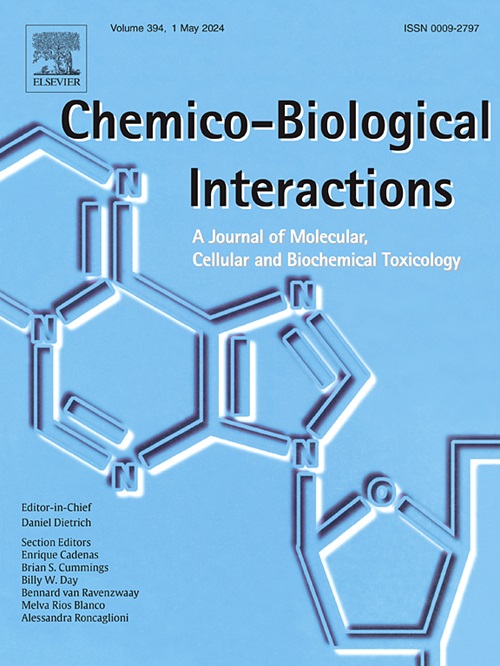Isobolographic interactions of cannabidiol and AM 1172 with cisplatin in human neuroblastoma and glioblastoma cell lines: An in vitro study
IF 4.7
2区 医学
Q1 BIOCHEMISTRY & MOLECULAR BIOLOGY
引用次数: 0
Abstract
Glioblastoma is the most aggressive brain cancer in humans with very poor prognosis and high mortality rate. Despite advances in treatment, glioblastoma almost always recurs and new therapeutic methods are urgently needed. This study aimed at assessing the cytotoxic and antiproliferative effects of AM 1172 and cannabidiol (two cannabinoid receptor ligands) in vitro, when used alone and in combination with cisplatin (a standard cytotoxic drug), in various human neuroblastoma (CHP-134, KELLY), human glioblastoma (U-87MG and T98G) and rat glioblastoma (C6) cell lines. Our experiments showed that AM 1172 and cannabidiol inhibited cell proliferation with IC50 values in the range of 2.29–17.21 μM (for AM 1172) and 11.61–20.35 μM (for cannabidiol), respectively. The selectivity index for AM 1172 ranged from 0.61 to 4.60 and that for cannabidiol ranged from 1.45 to 2.55 in the studied glioblastoma and neuroblastoma cell lines. With isobolographic analysis, it was found that AM 1172 combined with cisplatin exerted a synergistic interaction in the CHP-134 cell line (p < 0.01). In contrast, AM 1172 when combined with cisplatin produced an antagonistic interaction in the C6 cell line (p < 0.01). The remaining combinations of AM 1172 with cisplatin in the U-87MG, KELLY and T98G cell lines were additive. In case of cannabidiol, its combination with cisplatin produced an antagonistic interaction in the T98G cell line (p < 0.0001), whereas the combinations of cannabidiol with cisplatin in the CHP-134, U-87MG, KELLY, and C6 cell lines were additive in nature. The synergistic and additive interactions for the combination of AM 1172 and cannabidiol with cisplatin seem to be a promising direction in glioblastoma therapy. Unfortunately, the combinations producing antagonistic interactions (AM 1172+cisplatin in C6, and cannabidiol + cisplatin in T98G cell lines) should be avoided due to the antagonistic antiproliferative effect of two-drug mixtures.
大麻二酚和am1172与顺铂在人神经母细胞瘤和胶质母细胞瘤细胞系中的等密度相互作用:一项体外研究。
胶质母细胞瘤是人类最具侵袭性的脑癌,预后极差,死亡率高。尽管治疗取得了进步,但胶质母细胞瘤几乎总是复发,迫切需要新的治疗方法。本研究旨在评估AM 1172和大麻二酚(两种大麻素受体配体)在体外单独使用和与顺铂(一种标准的细胞毒性药物)联合使用时对各种人类神经母细胞瘤(CHP-134, KELLY)、人类胶质母细胞瘤(U-87MG和T98G)和大鼠胶质母细胞瘤(C6)细胞系的细胞毒性和抗增殖作用。实验结果表明,AM 1172和大麻二酚抑制细胞增殖的IC50值分别为2.29 ~ 17.21 μM (AM 1172)和11.61 ~ 20.35 μM(大麻二酚)。在胶质母细胞瘤和神经母细胞瘤细胞系中,AM 1172的选择性指数为0.61 ~ 4.60,大麻二酚的选择性指数为1.45 ~ 2.55。通过等尺度分析,发现AM 1172联合顺铂在CHP-134细胞系中发挥协同相互作用(p
本文章由计算机程序翻译,如有差异,请以英文原文为准。
求助全文
约1分钟内获得全文
求助全文
来源期刊
CiteScore
7.70
自引率
3.90%
发文量
410
审稿时长
36 days
期刊介绍:
Chemico-Biological Interactions publishes research reports and review articles that examine the molecular, cellular, and/or biochemical basis of toxicologically relevant outcomes. Special emphasis is placed on toxicological mechanisms associated with interactions between chemicals and biological systems. Outcomes may include all traditional endpoints caused by synthetic or naturally occurring chemicals, both in vivo and in vitro. Endpoints of interest include, but are not limited to carcinogenesis, mutagenesis, respiratory toxicology, neurotoxicology, reproductive and developmental toxicology, and immunotoxicology.

 求助内容:
求助内容: 应助结果提醒方式:
应助结果提醒方式:


